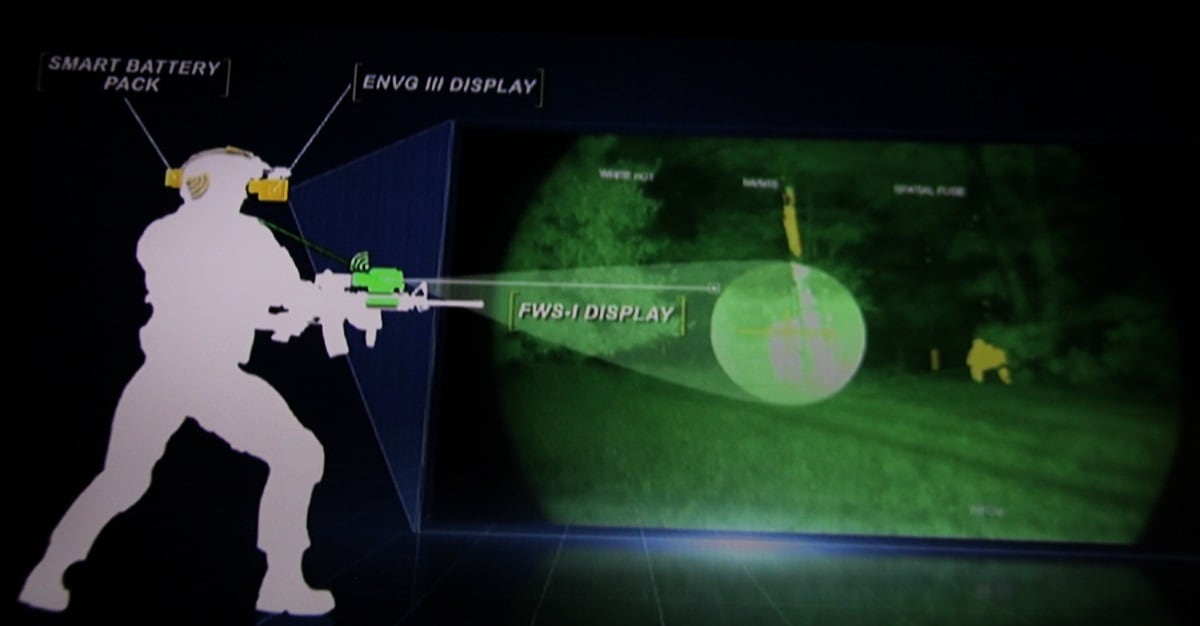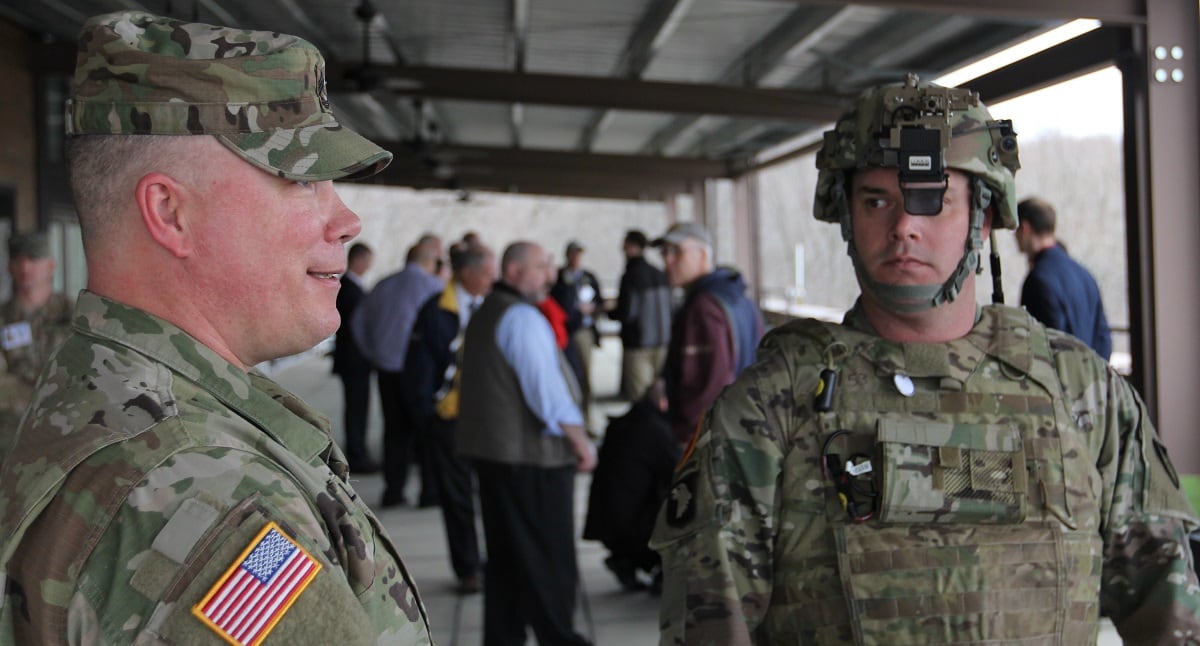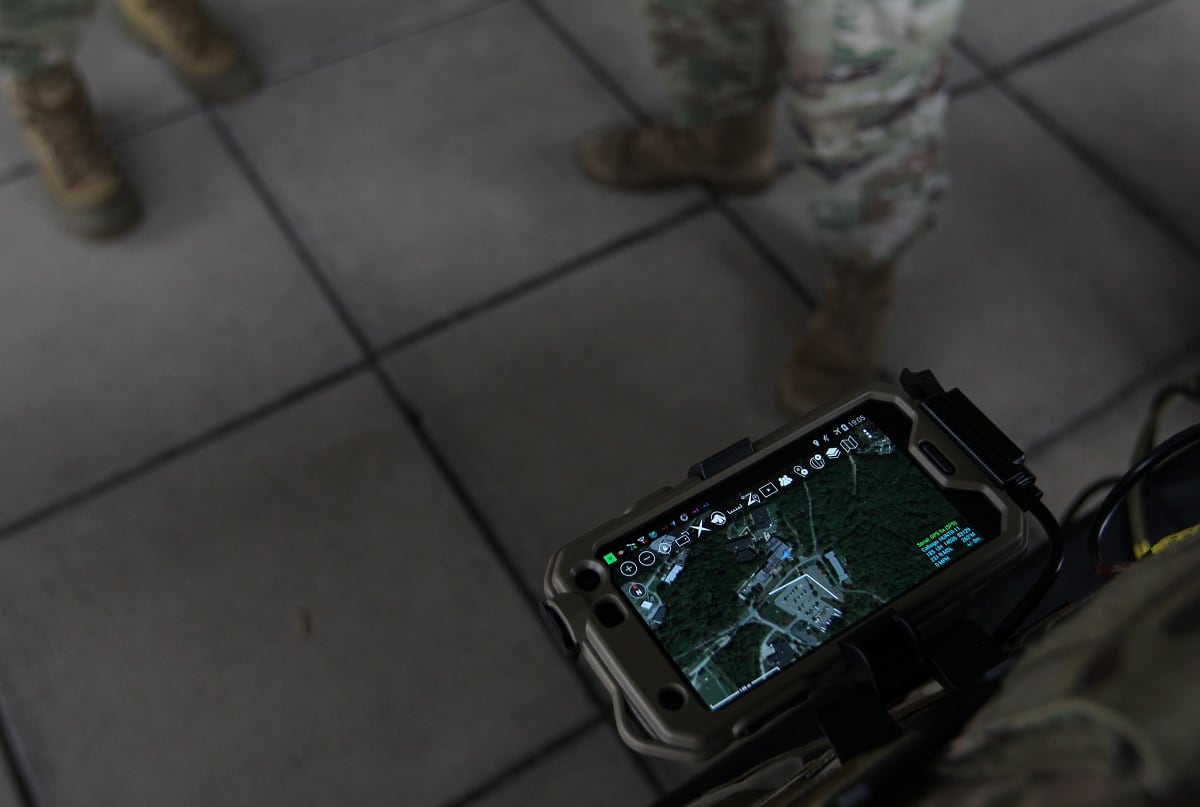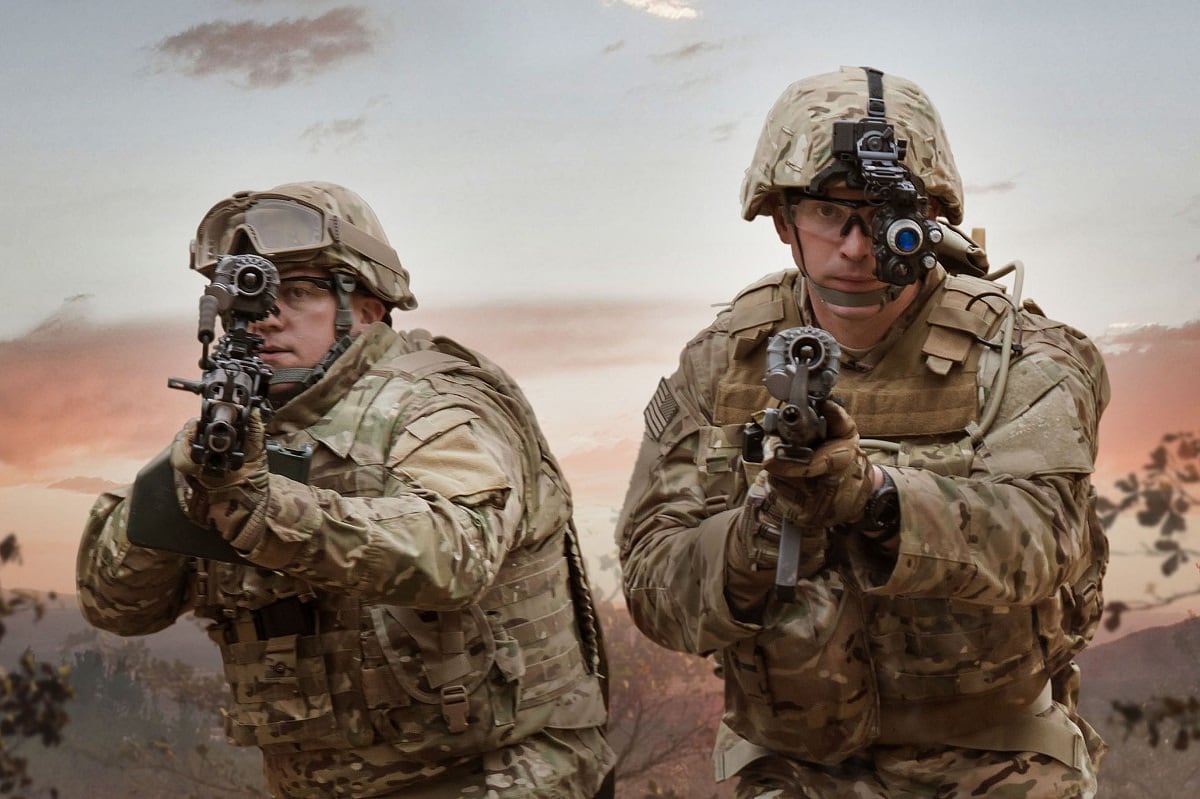For most of modern military history, soldiers who needed to track battlefield movement or simply navigate to an objective while on foot would spend much of their time staring down at a paper map or GPS device screen, much like a distracted phone gazer bumping into people at the mall, but with deadlier consequences.
A new combination of advanced night vision goggle is merging day/night vision, thermal viewing, weapon sight and augmented reality into one view that allows a soldier to see the battlefield while maneuvering.
Think Google Glass, with a gun.
And the head of the Army’s new cross-functional team focused on soldier lethality sees the device as a way to exponentially improve the dismounted warfighter’s battlefield awareness.
“This is a true, fundamental change to the capability we’re giving to our dismounted soldier,” said Brig. Gen. Christopher Donahue during a recent media roundtable phone interview.

The Enhanced Night Vision Goggle, has been paired with augmented reality software and the Family of Weapons Sights-Individual, FWS-I, by the Army’s Communication-Electronics, Research, Development and Engineering Center and Program Executive Office Soldier to put all of the capabilities into the view of the soldier.
The weapons sight capability brings the weapon sight picture into the NVG goggles through a camera on the sight. This allows a soldier to shoot around corners without being exposed. It also can switch views from the sight to a picture-in-picture where the normal view is presented along with the weapon’s sight picture.
“The beauty of the two systems is there’s wireless communication between the goggle and weapon sight,” said Dave Smialek, the business development manager for Survivability, Targeting, and Sensing Solutions at BAE Systems, which is producing the goggle. “What’s transmitted is the aim point from the weapons sight, displayed as an overlay on the ENVG-III image.”
The company recently received two orders for a total of $97 million to produce the goggles and thermal weapons sights, according to a company release.
BAE Systems developed a Rapid Target Acquisition Module to reduce target engagement time as part of building the new goggle.
The augmented reality portion creates an almost individualized tracker that lets the soldier mark targets, pick waypoints while on patrol and share those digital icons with other members of the squad.
Smialek said past night vision goggles didn’t have the capability to display video. Advancements in wireless technology have enabled the change.
At a February demonstration at Fort Belvoir, Virginia, soldiers and researchers with CERDEC showcased the system’s capabilities.
Sgt. 1st Class Clint Nelson wore a single-eye display device that shows augmented reality, currently in a monocular but likely to be integrated into a binocular-type night vision goggles. The binocular design allows for greater depth perception and more realistic viewing.

He described standard land navigation in which a soldier shoots an azimuth with his or her compass and map and follows that line to the objective, adjusting around and over obstacles and re-shooting the azimuth to stay on course.
“This allows me to plan out my routes in my patrol base and upload the route,” Nelson said. “Then (navigation) points move me to the route in the real world. I can easily walk around, go completely off my azimuth. I’m no longer looking down at a phone or a map.”
He explained how these devices can help a soldier process massive amounts of data, especially in an urban operation.

“In major urban centers, there are a lot of buildings, a lot of uncertainty,” Nelson said. “This can also do tracking and reporting. Anyone on the system can populate the enemy, send it to me and it comes up on my screen.”
That helps a soldier in a confusing environment make sense of what he or she is seeing and what they’re fellow soldiers are seeing. Identifying threats, friendly forces and enemy targets.
Donahue said both the Marines and representatives of the special operations community are monitoring the device’s advancement.

Todd South has written about crime, courts, government and the military for multiple publications since 2004 and was named a 2014 Pulitzer finalist for a co-written project on witness intimidation. Todd is a Marine veteran of the Iraq War.







